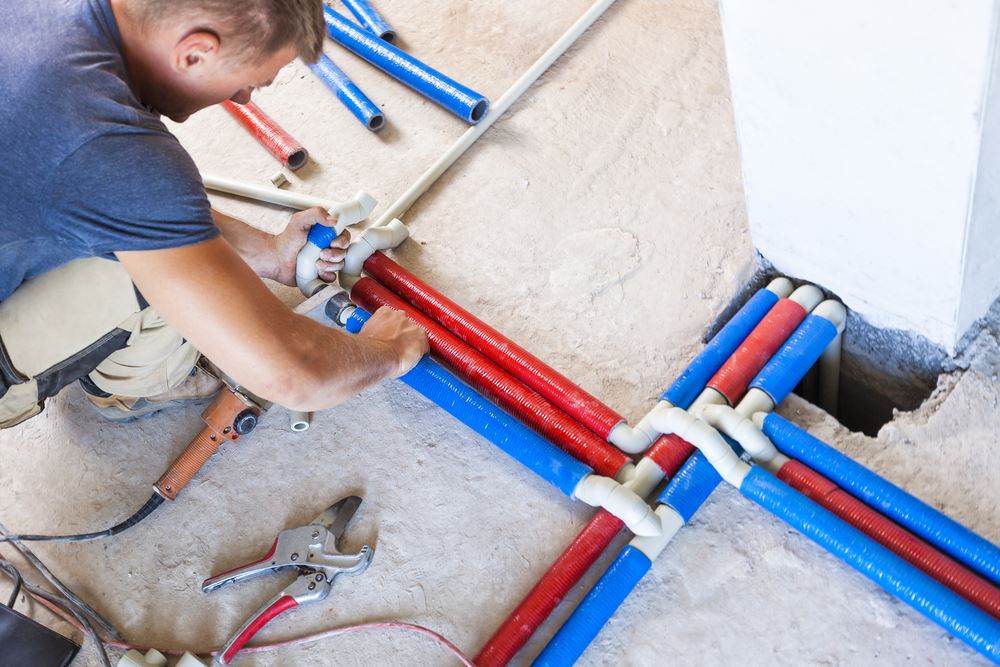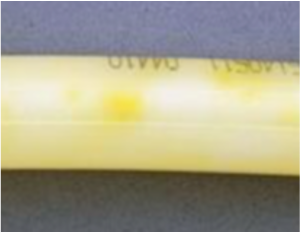Determining Whether a Job Is a Simple Repair or Full Repipe - Consider these three questions when you’re deciding between repair and repipe options on a job

The decision on whether to repair a failed section of pipe or recommend a full repipe isn’t always an easy one.
Homeowners may balk at the expense of a repipe, but if problems are systemic, it could save them from additional failures and expensive damage down the line. On the other hand, there may not be a reason to repipe a home if the cause of the failure is isolated. The challenge for plumbers, then, is to accurately determine the cause of the failures and diagnose which are isolated and which are likely to lead to future problems.
Here are three questions that can guide you through that process:
Is the problem related to a localized external cause?
All plumbing materials can be weakened by exposure to certain chemicals, and different plumbing systems are incompatible with different chemicals. Plastic plumbing systems, for example, may be incompatible with some household chemicals commonly stored under sinks. In the case of failures in these locations, replacing the plastic stub-out with a copper one should resolve the issue.
CPVC can be softened by the plasticizers in some rubbers and flexible vinyl products. If you encounter CPVC that has softened and failed after contact with a rubber or flexible vinyl product, there’s a good chance you’ve found the cause of the failure. Use the FBC System Compatible Program to identify materials that are compatible and incompatible with FlowGuard Gold CPVC.
PEX, another common plastic plumbing system, is known to have compatibility concerns with closed-cell spray foam insulation, organic chemicals, strong acids, strong bases, solvents, petroleum distillates and adhesive tapes. The plastic fittings used in PEX systems are particularly vulnerable to damage from exposure to PVC primers for solvent welding, which can cause the fittings to split or shatter under minimal stress. If you encounter isolated failures in a PEX system that has been exposed to external chemicals, try to identify the chemical exposure and verify its compatibility with the pipe manufacturer to determine if it could be a likely cause.
These failures are likely to be isolated to the area of exposure and in most cases can be repaired by cutting out the affected section and replacing it, while simultaneously removing the external source of the failure.
Is the problem related to corrosion/degradation caused by chemicals in the water?
Two of the most common plumbing systems, PEX and copper, are vulnerable to degradation or corrosion caused by water chemistry, including the chlorine-based disinfectants used to ensure the safety of drinking water. These failures are most common on the hot water side and are often characterized by discoloration and pin-hole leaks that are most severe in the areas of highest temperature and pressure — most typically close to the water heater or in a hot water recirculating line.
Plumbers may be reluctant to recommend a repipe if the system isn’t that old, but age shouldn’t be a determining factor. While these failures are typically most severe in localized areas, the damage to the system can occur throughout the piping. Homeowners who have initially replaced small sections of degraded pipe have gone on to experience multiple failures due to chlorine degradation in homes that are 10 years old or less.

To identify signs of degradation in PEX piping, look for cracking along the length of the pipe, permeation of the print line into the inner wall of the pipe and discoloration or “popcorning” of the exterior wall of a translucent pipe. In pipes that have been colored red, white or blue this effect may be harder to see but can still be identified by the presence of multiple short, thin splits in the pipe.
Related: Give Customers a Healthy Home With the Right Piping Materials
Is the problem related to the installation of the system?
This is where things can get a little tricky as failures due to installation errors are usually isolated but could require a repipe if they were repeated across the system. Across all systems, including PEX, copper and CPVC, leaks or blow-outs at a fitting can be an indication of installer error where the fitting was improperly crimped, soldered or solvent cemented. These errors could be isolated or could be a sign of an inexperienced plumber who made the same mistake with every fitting.
Improper handling of thermal expansion and contraction can also result in isolated or systemic failures. For example, in a CPVC system the force on a pipe from thermal expansion and contraction can exceed 1,200 psi under the right circumstances. With CPVC, expansion and contraction-related failures will only occur if expansion and contraction were not properly accounted for in the installation. These failures can be identified by looking for fittings, such as 90-degree elbows or tees, which have been distorted from their original 90-degree angle due to the force of expansion.
With PEX common methods of accounting for expansion and contraction could actually increase the risk of chlorine-induced failures caused by flexing the pipe where it has been bent. These failures can be identified by circumferential cracking that is distinct from the cracking along the length of the pipe that is a sign of chlorine degradation. Circumferential cracking is often misdiagnosed as damage from nicking or scratching during installation, but actually results from the combination of stress and chlorine exposure.
It is important to note that the presence of an expansion tank does nothing to protect against thermal expansion and contraction of the pipe. These tanks are designed to account for pressure spikes caused by thermal expansion of the water, not the effect of temperature changes on the pipe itself.
Choosing the right material for a repipe
If a repipe is necessary, you have an opportunity to address the root cause of the problem and prevent future failures from the same cause. If the source of the failure(s) was that the plumbing system was incompatible with local water conditions, it only makes sense to choose a material that can handle those conditions.
Article courtesy of Plumbing & Mechanical, By Jonathan Simon
June 29, 2023